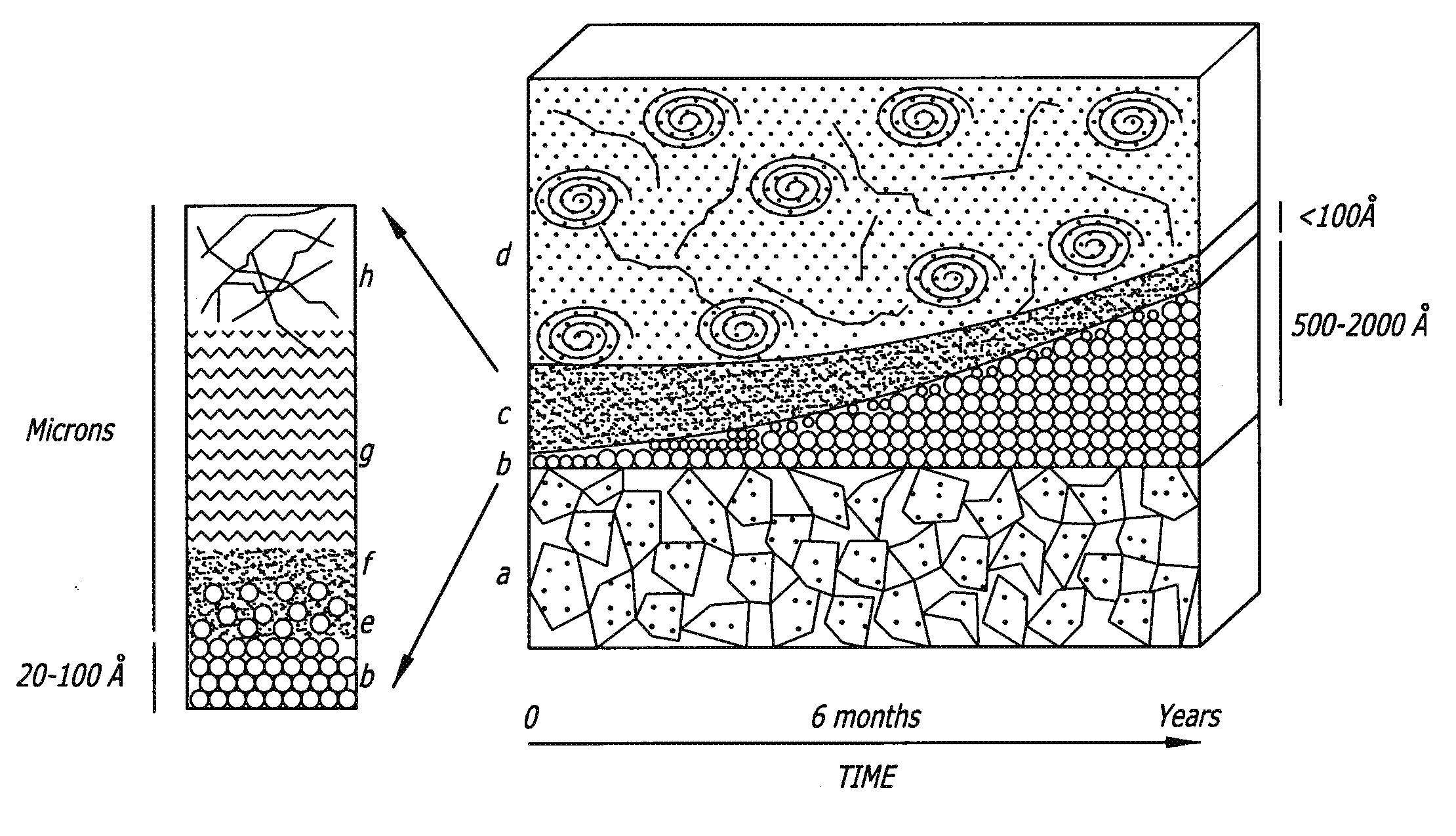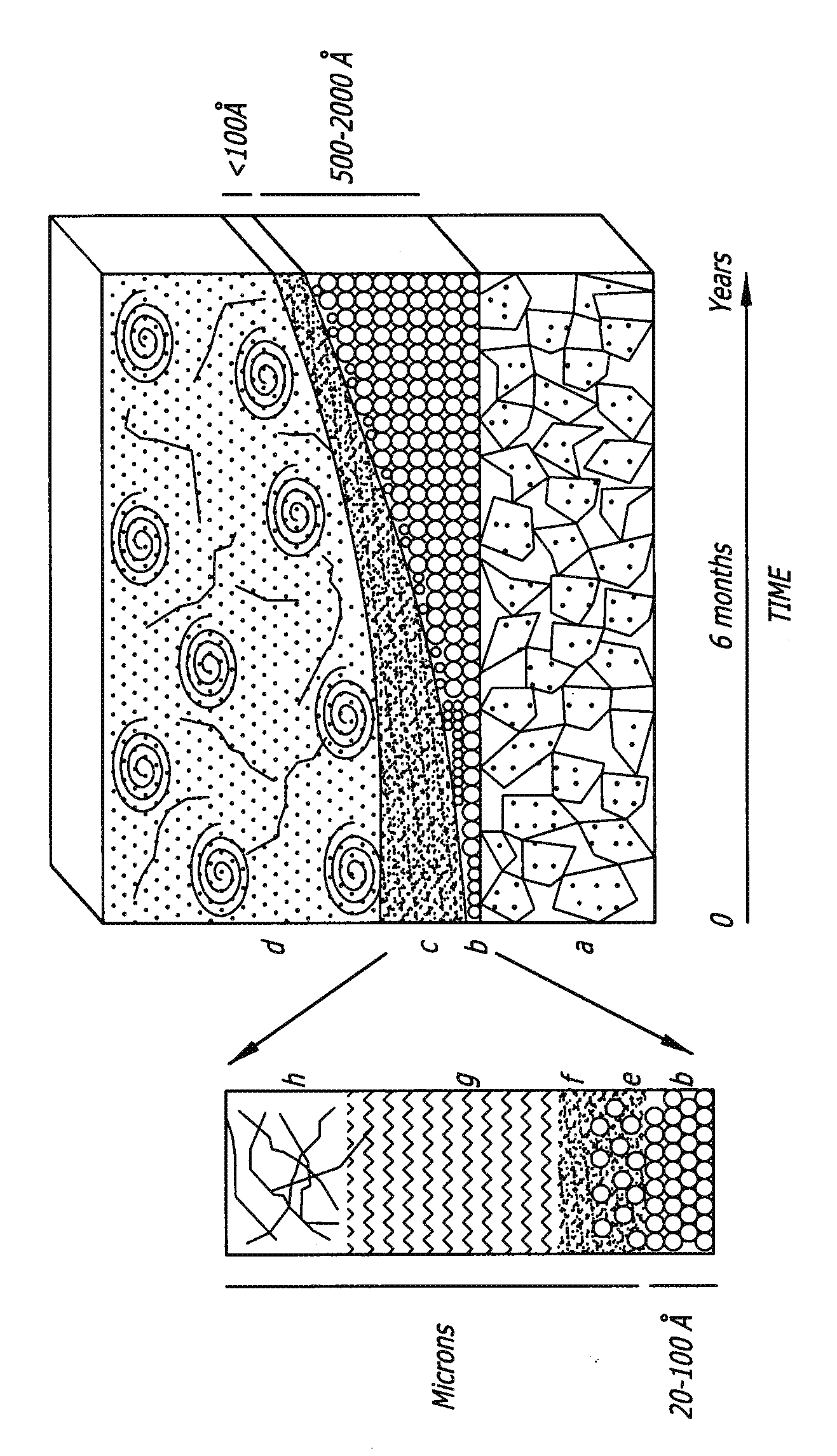Osseointegration and biointegration coatings for bone screw implants
a bone screw and osseointegration technology, applied in the field of bone screw osseointegration and biointegration coatings, can solve the problems of stainless steel alloys, which produced greater artifacts, and general unsatisfactory, and achieve the effect of promoting the interfa
- Summary
- Abstract
- Description
- Claims
- Application Information
AI Technical Summary
Benefits of technology
Problems solved by technology
Method used
Image
Examples
Embodiment Construction
[0021]The current invention is directed to novel orthopaedic bone / pedicle screws and hardware that include coatings to promote the interface between the implant and the patient's bone / tissue. More specifically, the current invention teaches novel orthopaedic bone screws and hardware for use with patients that have decreased bone mineralization, and more particularly to patients who have osteoporosis, osteopenia or osteornalacia. The promotion of this healthy interface in at-risk patients will involve the use a first coating that facilitates osseous integration and additionally at least one of two other types of coatings:[0022]a) coatings that reduce the risk of infection in immunologically suppressed patients and / or for utilization in patients who have infection, but who require stabilization; and[0023]b) coatings that permit the use of dissimilar metals and prevent galvanic corrosive reactions.
[0024]Each of the above-listed coating types will be described in detail in the sections ...
PUM
| Property | Measurement | Unit |
|---|---|---|
| Fraction | aaaaa | aaaaa |
| Thickness | aaaaa | aaaaa |
| Concentration | aaaaa | aaaaa |
Abstract
Description
Claims
Application Information
 Login to View More
Login to View More - R&D
- Intellectual Property
- Life Sciences
- Materials
- Tech Scout
- Unparalleled Data Quality
- Higher Quality Content
- 60% Fewer Hallucinations
Browse by: Latest US Patents, China's latest patents, Technical Efficacy Thesaurus, Application Domain, Technology Topic, Popular Technical Reports.
© 2025 PatSnap. All rights reserved.Legal|Privacy policy|Modern Slavery Act Transparency Statement|Sitemap|About US| Contact US: help@patsnap.com


